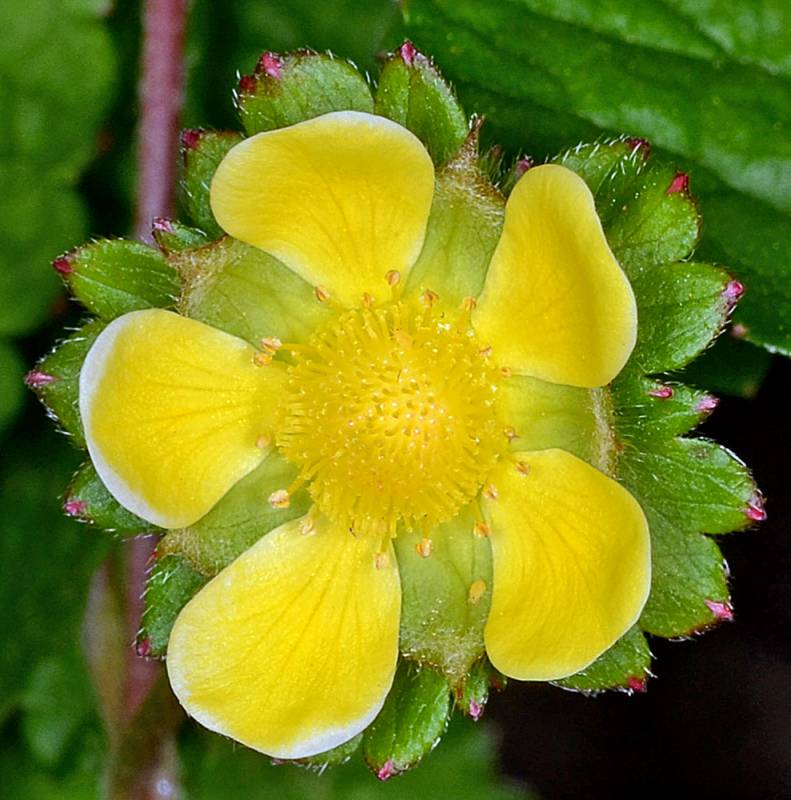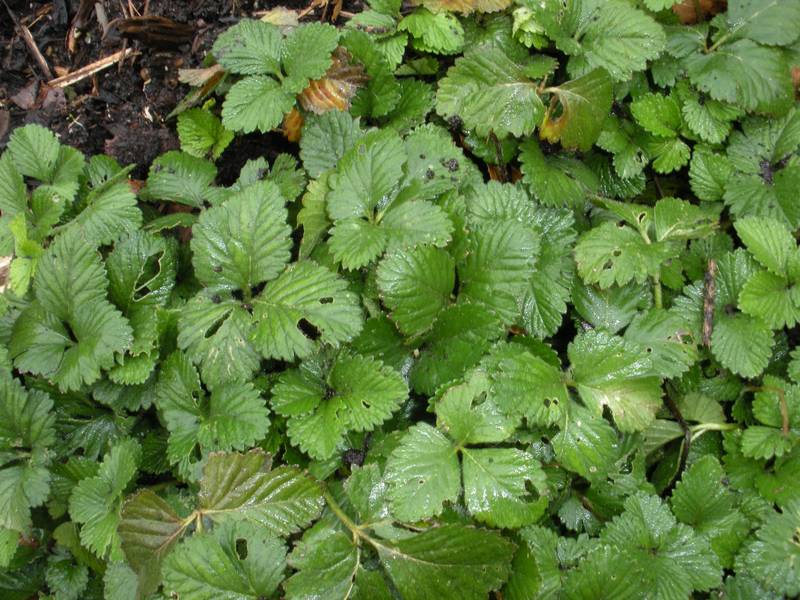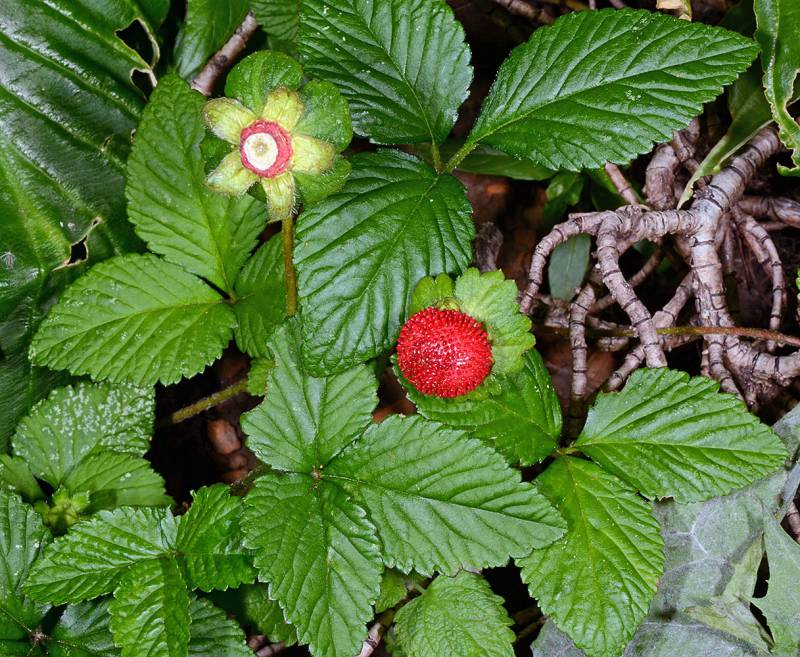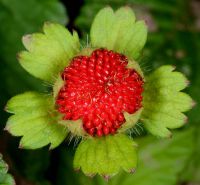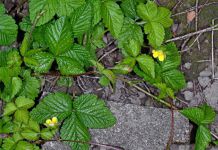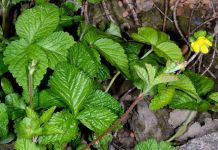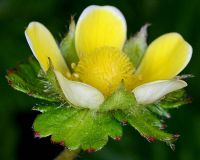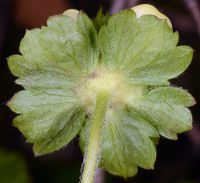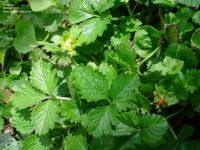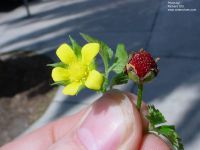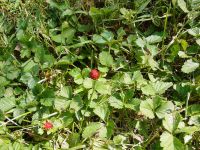Distribution: Occurring west of the Cascades crest in lowland western Washington; southwestern British Columbia to Oregon; also in eastern North America.
Habitat: Disturbed forest and forest edge at low elevations, where escaping from cultivation.
Flowers: May-June
Origin: Introduced from Asia
Growth Duration: Perennial
Conservation Status: Not of concern
Pollination: Bees, flies
Herbaceous, silky-hairy perennial, the stems trailing and freely rooting at the nodes, producing off-set plants.
Leaves slender-petiolate, the stipules toothed or lobed; leaflets 3, elliptic to ovate-elliptic, 2-4 cm. long, with rounded teeth.
Flowers single on axillary peduncles; calyx saucer-shaped, 4-6 mm. long at flowering, the five lobes considerably shorter than the alternating, broadly obovate, 3-5 lobed bracteoles; petals 5, deciduous, yellow, 3-5 mm. long; stamens 20-25, shorter than the petals; pistils numerous.
Fruit a reddish achene; receptacle becoming enlarged, hemispheric, fleshy in fruit (strawberry-like).
Publication: Nat. Pflanzenfam. 3(3): 33. 1888.
- var. indica – Indian strawberry, mock strawberry Occurring west of the Cascades crest in lowland western Washington; southwestern British Columbia to Oregon; also in eastern North America.
PNW Herbaria: Specimen records of Duchesnea indica in the Consortium of Pacific Northwest Herbaria database
WA Flora Checklist: Duchesnea indica checklist entry
OregonFlora: Duchesnea indica information
E-Flora BC: Duchesnea indica atlas page
CalPhotos: Duchesnea indica photos

